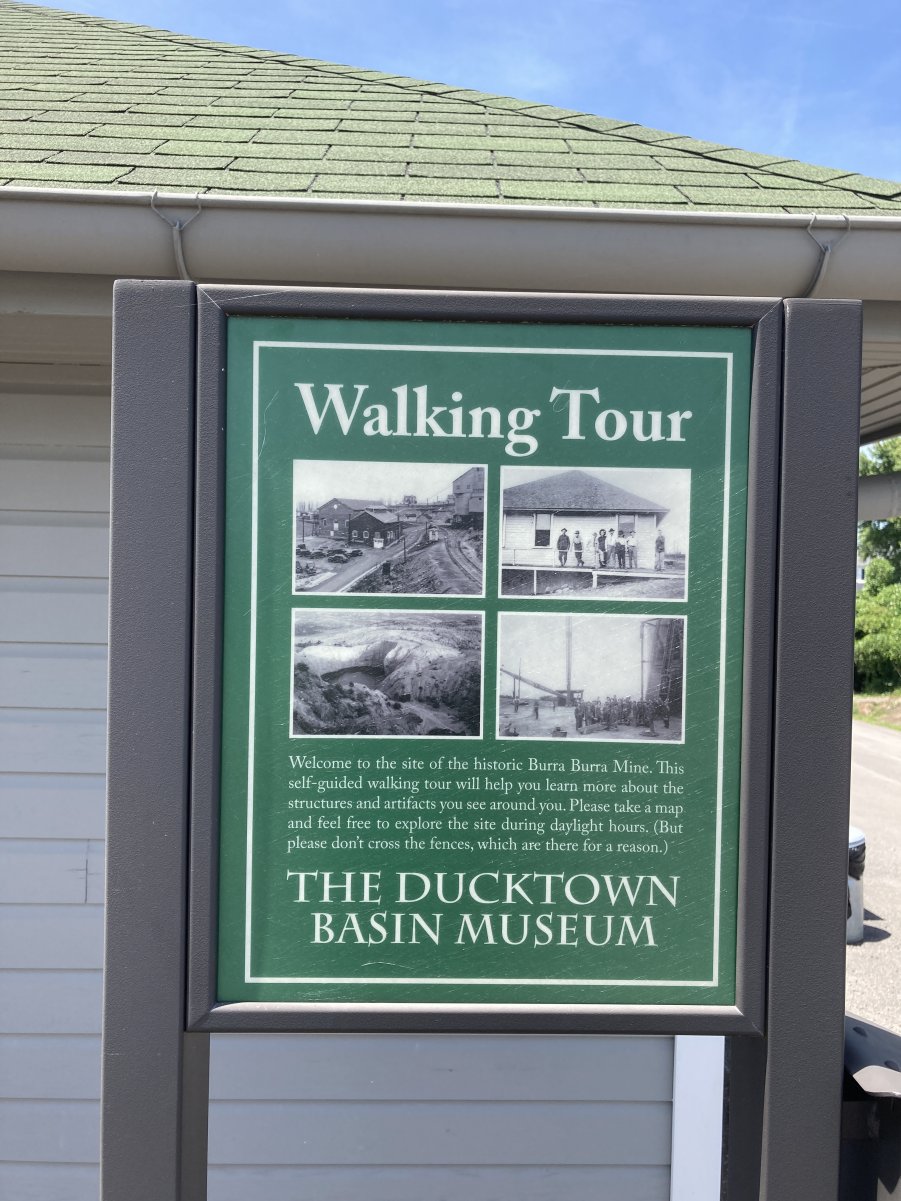
| 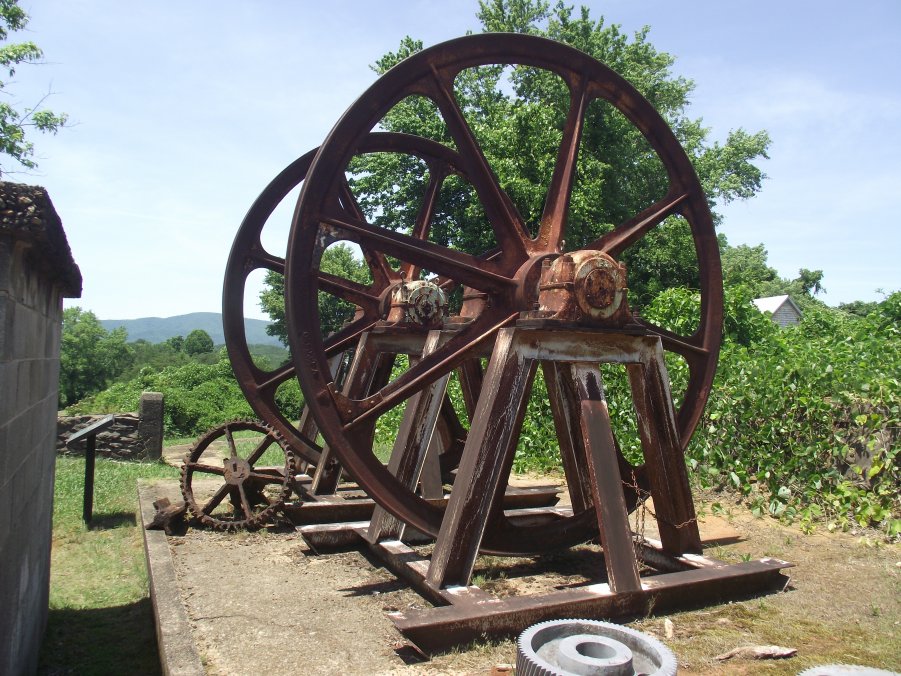
(Left) The Walking Tour of the Burra Burra Mine surface facilities begins with a series of outdoor mining equipment exhibits adjacent to the museum which had been the Mine Office (ca1910). Excellent signage and an informative brochure make the tour route easy to follow.
(Above) These sheave wheels were located on top of the Calloway Mine headframe. Cables from the mine hoist passed over these wheels and were attached to skips for hoisting ore and the cage for the miners working underground.
|
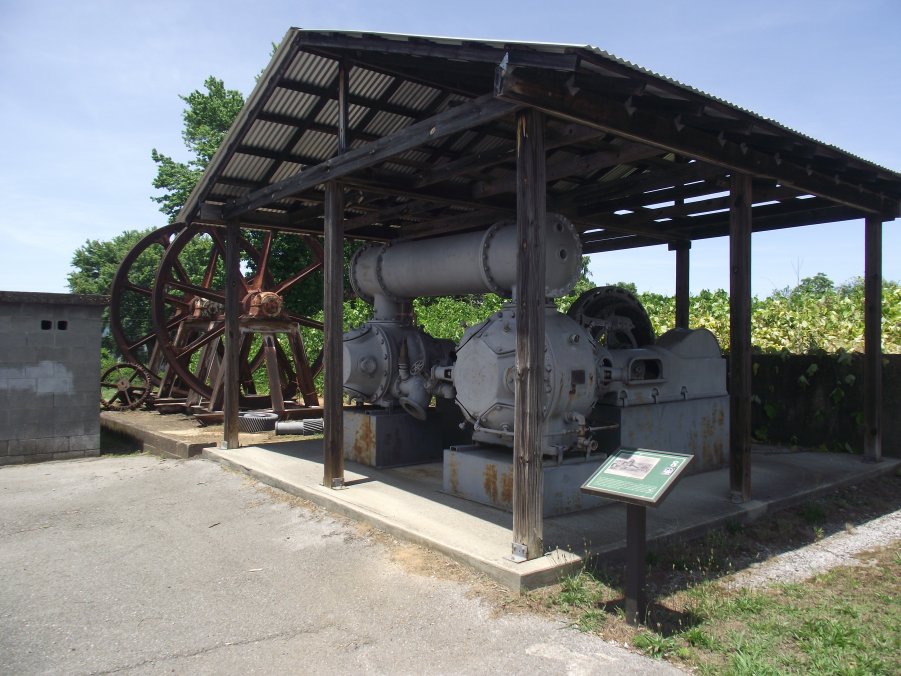 This Ingersoll-Rand air compressor was used at three mines in the district, the Ocoee Mine (1922), the Isabella Mine and Flotation Mill (from 1944), and the Mary Mine (from 1947). This Ingersoll-Rand air compressor was used at three mines in the district, the Ocoee Mine (1922), the Isabella Mine and Flotation Mill (from 1944), and the Mary Mine (from 1947).
| 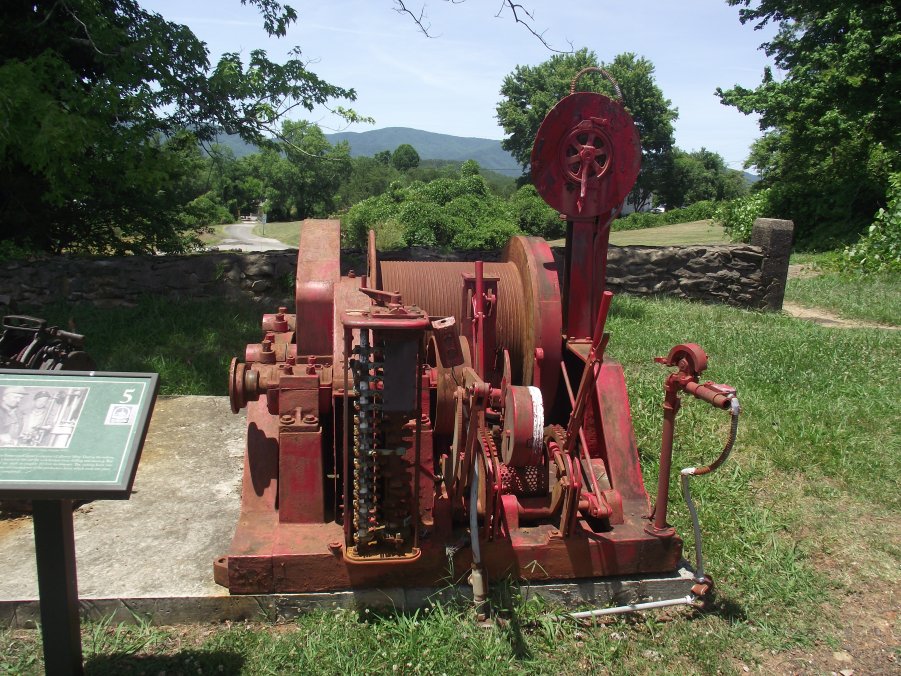
In the 1950s, this small sinking hoist was used for sinking a shaft at the Calloway Mine. |
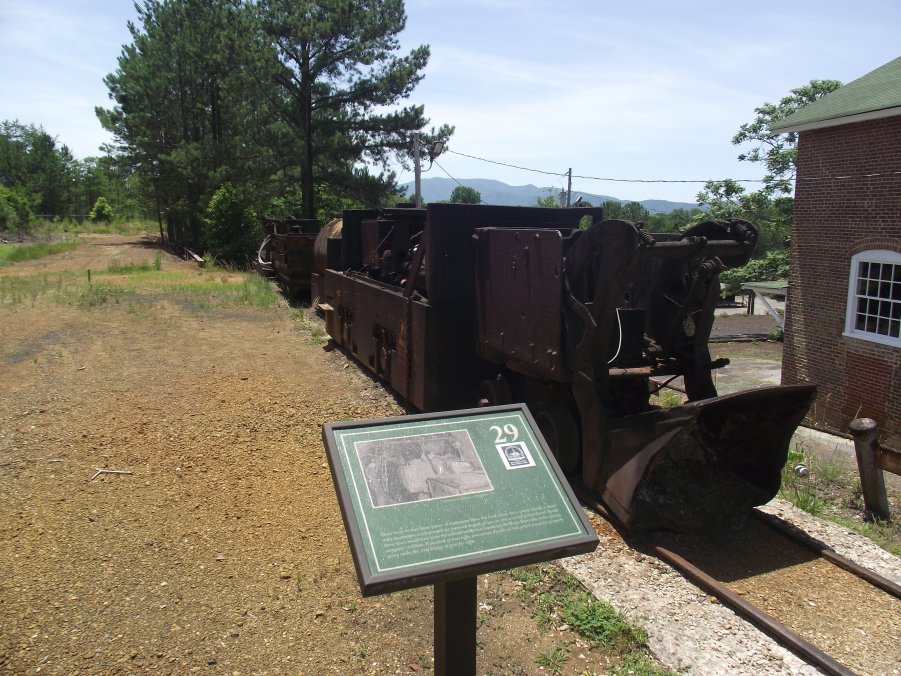
An Eimco mucking machine (right), diesel and compressed air mine locomotives, and an ore car are examples of the rail equipment used in the underground mines.
| 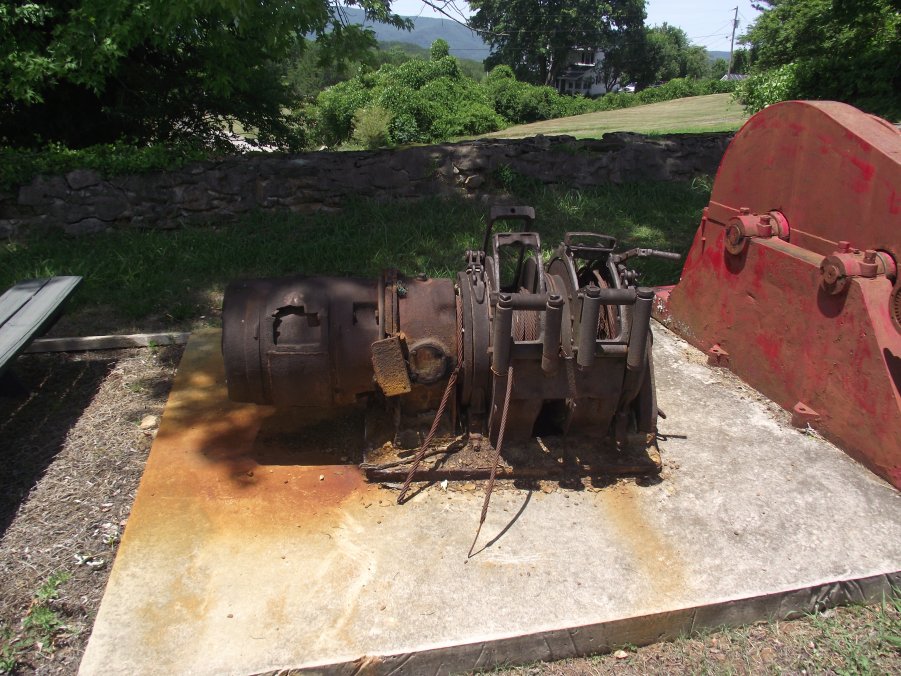
| Cables from this slusher were attached to a scraper blade which was used to move broken ore from drawpoints under a stope to a chute for loading mine cars in the haulageway below. |
|
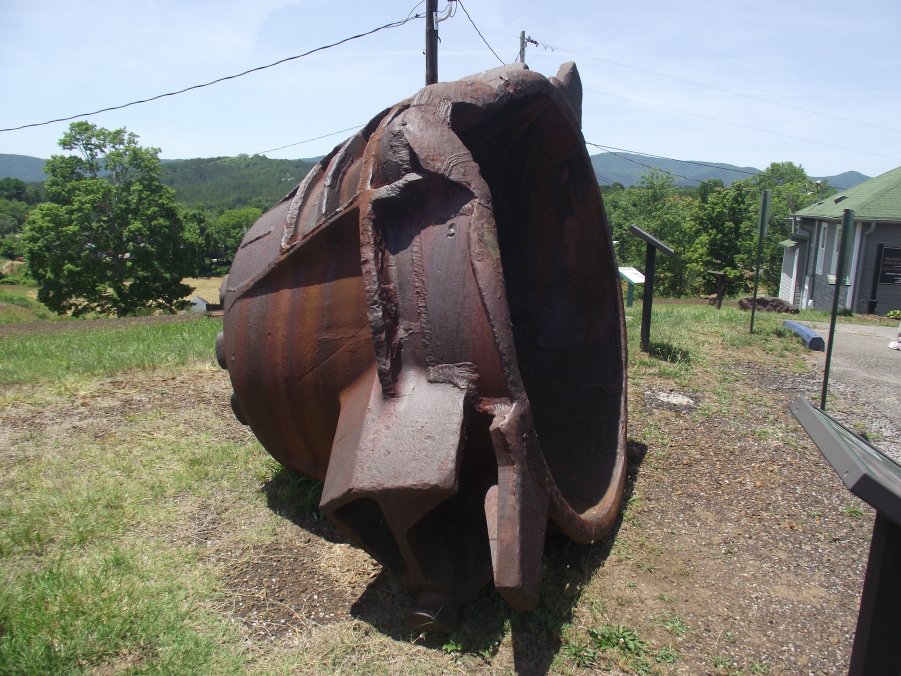
This gigantic ladle was once used at the Copper Smelter in Copperhill to transfer molten copper from the smelting furnaces to the convertors, and from the convertors to the casting area where it was cast into ingots. It weighs 17,000 pounds empty. | 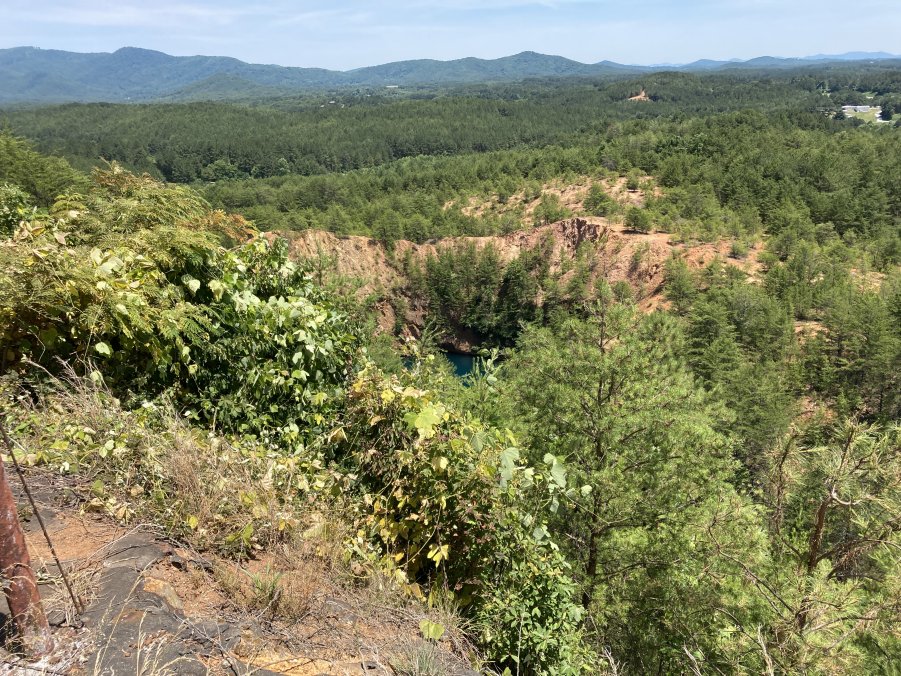
From the mine overlook above the Burra Burra collapse, the success of revegetation efforts can be seen in the forests in the distance. The area near the collapse was initially left as a reminder of the barren conditions that once existed; however, natural revegetation is now occurring in that area.
|
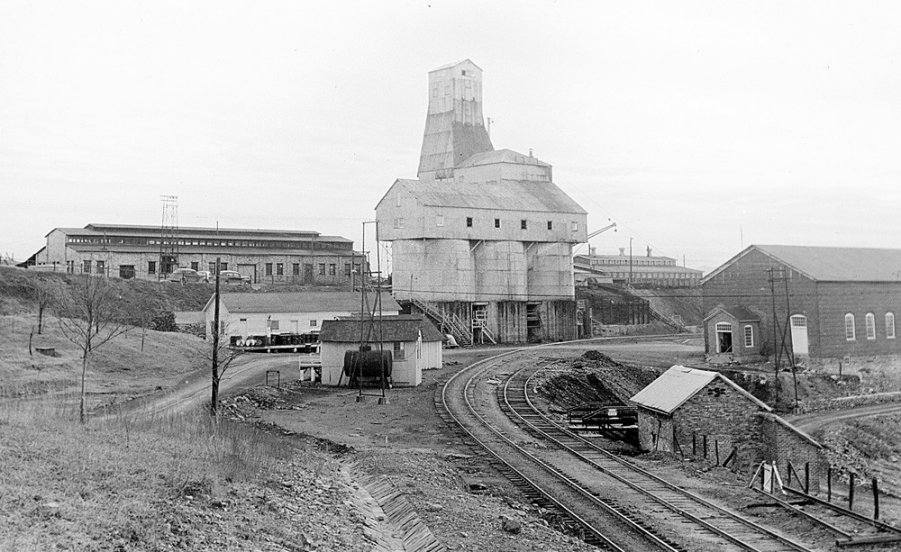
A ca1920s view of the mine yard at the Burra Burra. With the exception of the Headframe and the upper portion of the Ore Bins, the other buildings remain on the site. The Miners’ Dry is visible behind the Headframe. (Tennessee Historic Commission photo). | 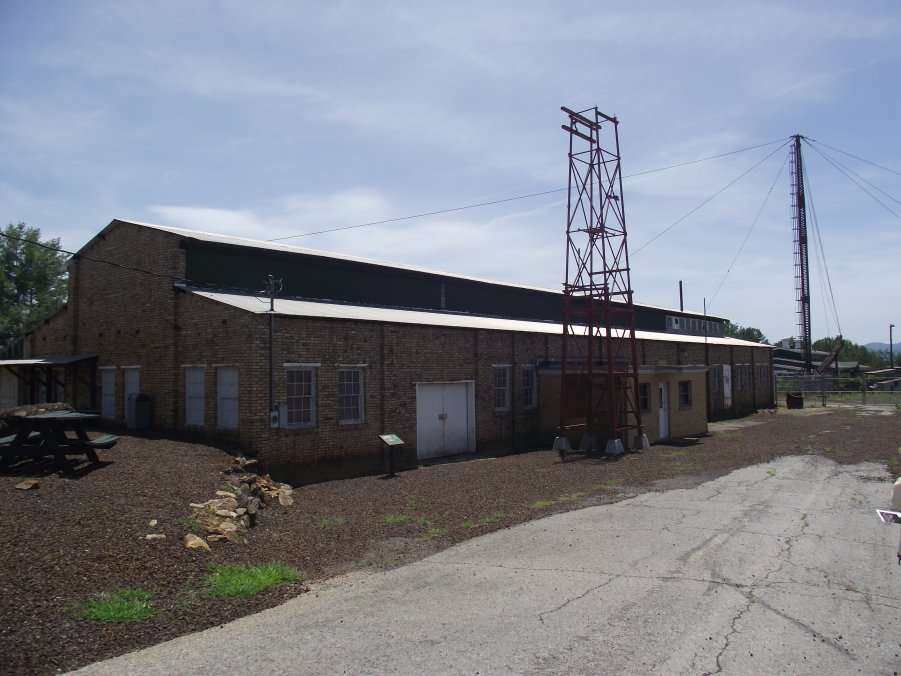
The Machine Shop building dates from 1922. It was used to repair mining equipment. It is now used to store equipment intended for display.
|
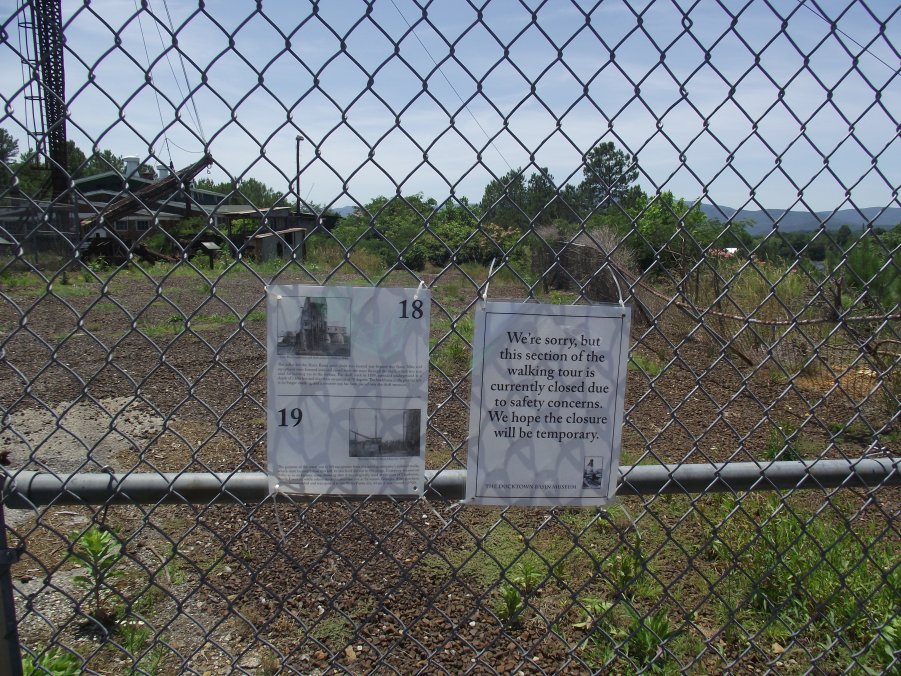
During our visit, the shaft area was closed but it was possible to see the large Derrick (ca1917) used for moving materials in the yard.
| 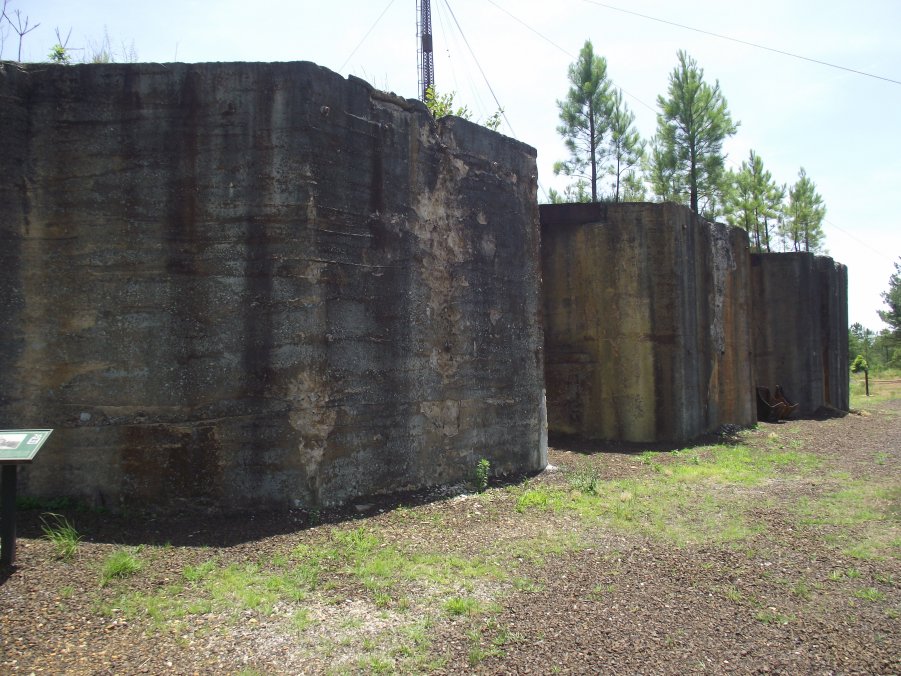
The massive concrete bases of the three large steel Ore Bins (ca1917) remain in the yard. Ore was loaded onto rail cars for shipment to the Mill.
|
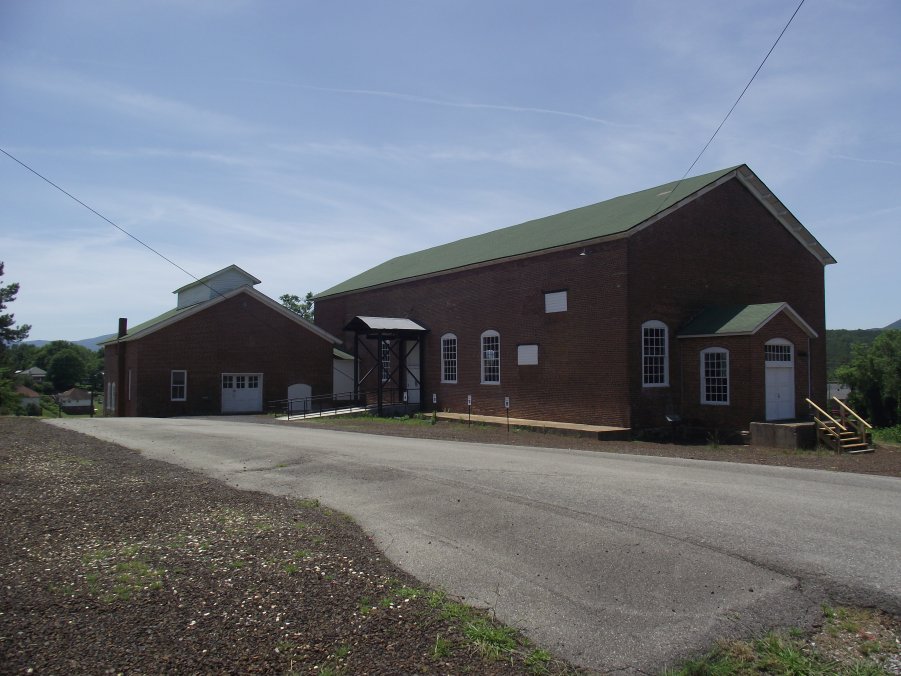
The Boiler House (left, ca1900) and the Hoist House (right, ca1901). Initially, steam engines were used to power the mine hoist and a compressor used to generate compressed air to drive drills, pumps, and other mining equipment. In 1917, the hoist and compressor were converted to locally generated electricity. The equipment in these buildings has since been removed.
| 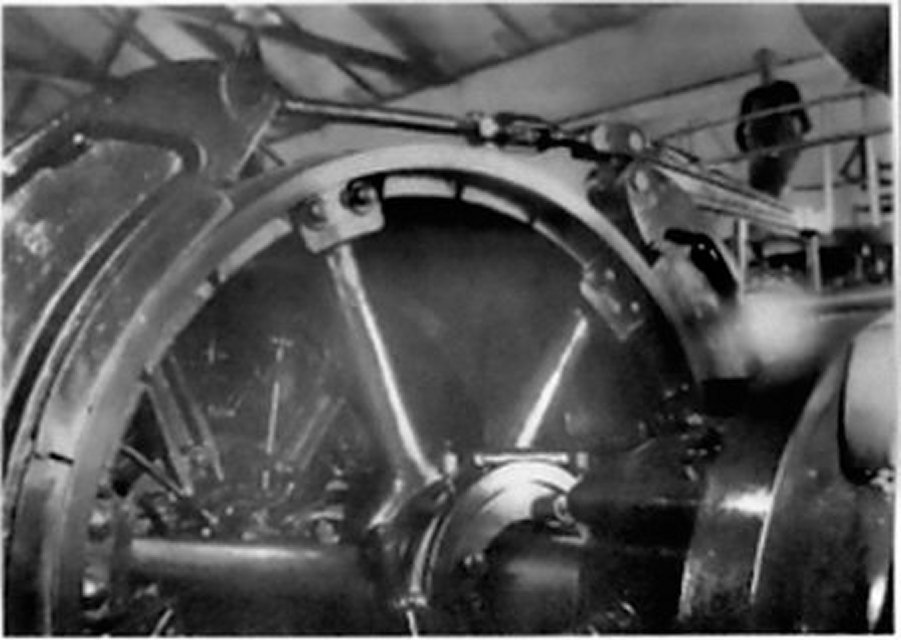
An historic photo of the original steam driven hoist at the Burra Burra Mine (ca1901). (Copper Basin Museum photo) |
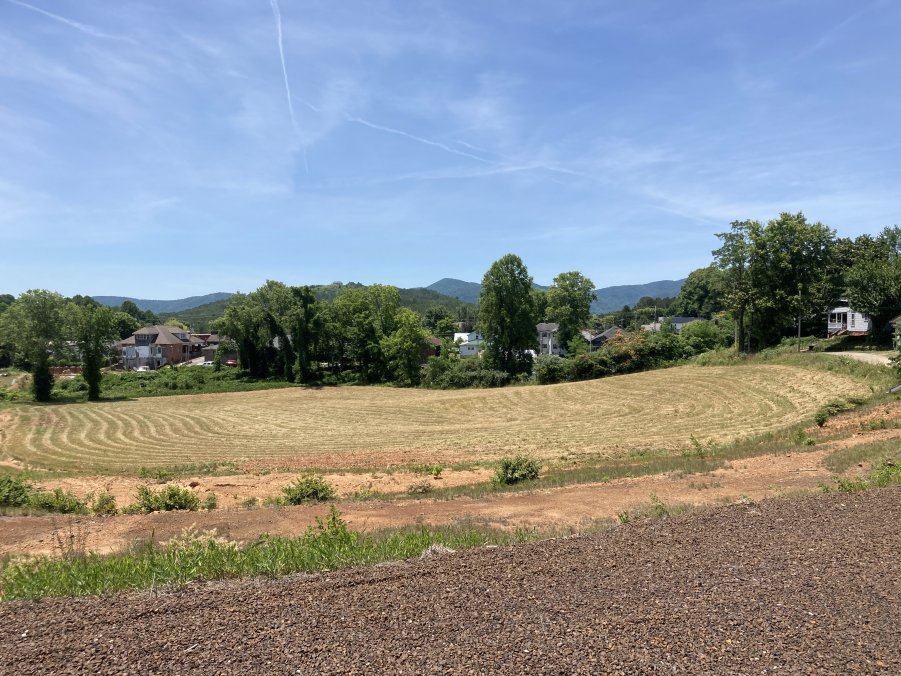
View across the Ducktown baseball field. The Tennessee Copper Company Clinic was located just to the left of the photo.
| 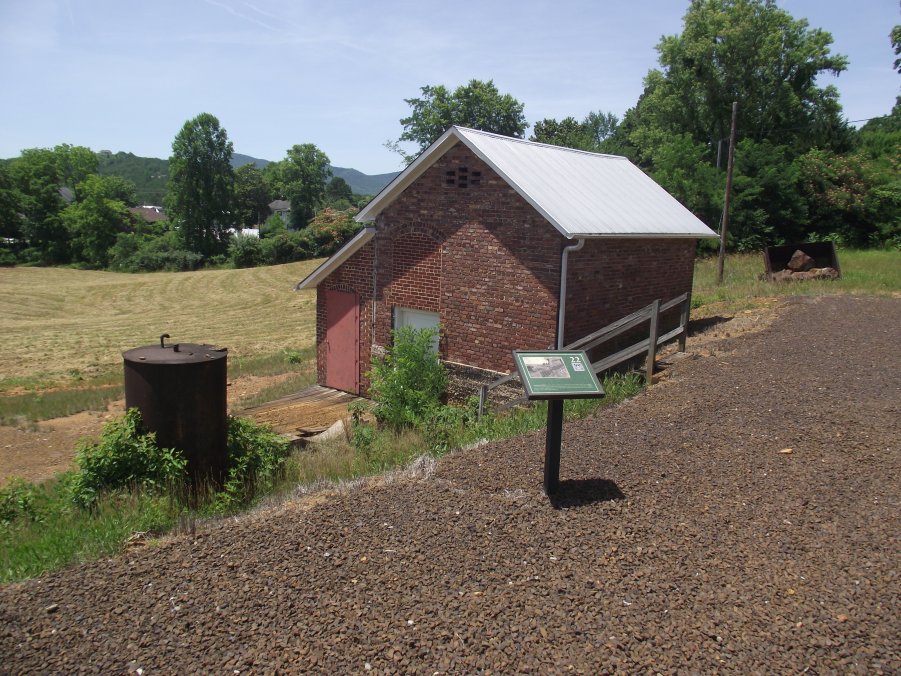
The brick Powder House (ca1910) was located at a distance from the other buildings in the mine yard due to the risk of explosion. |
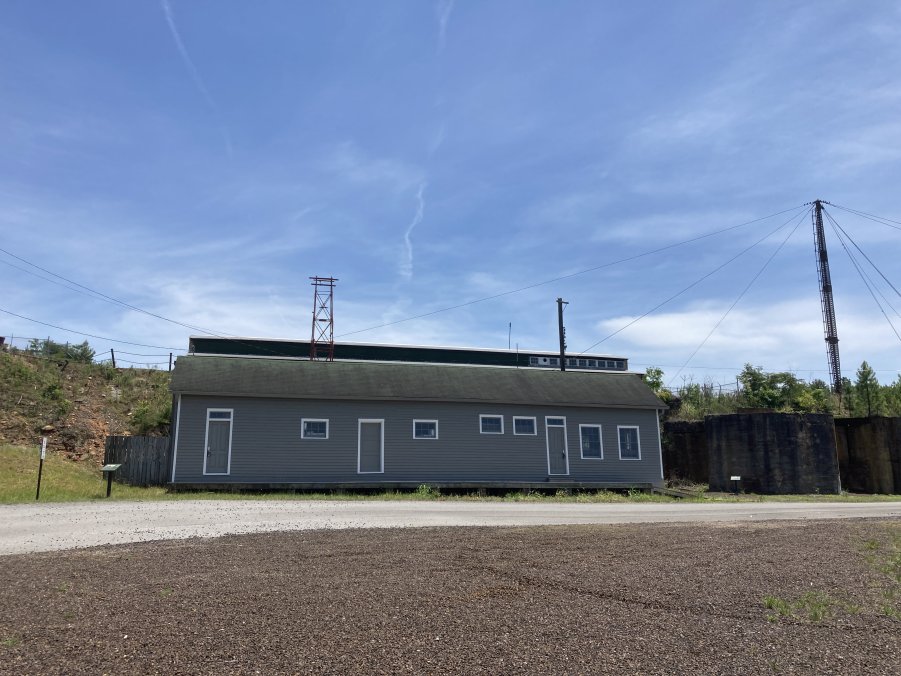
The Core House held offices for the geology staff and an ore analysis laboratory. | 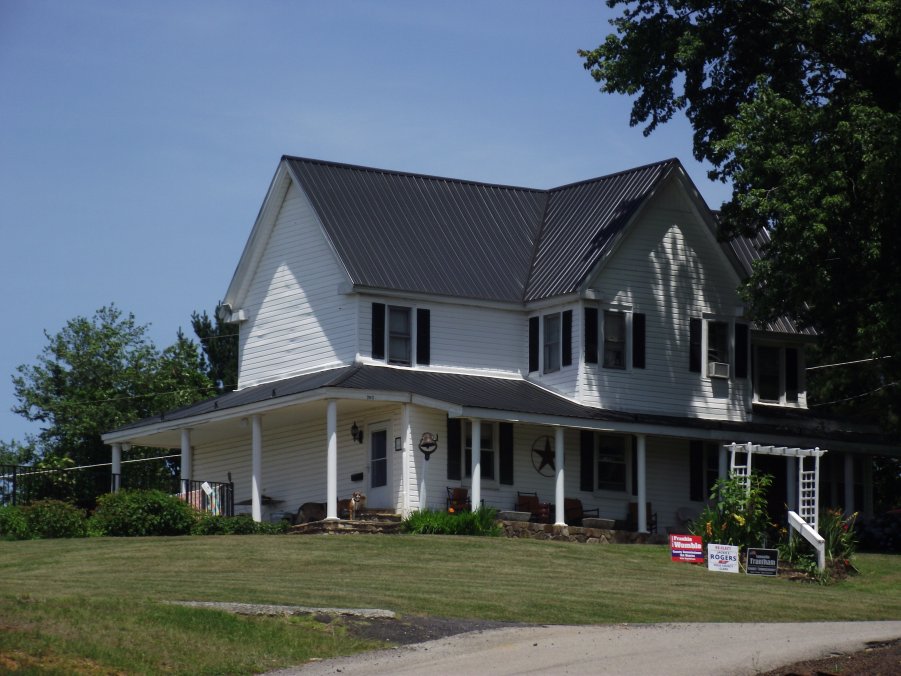
The Mine Superintendent’s House has been converted to a bed and breakfast. |


